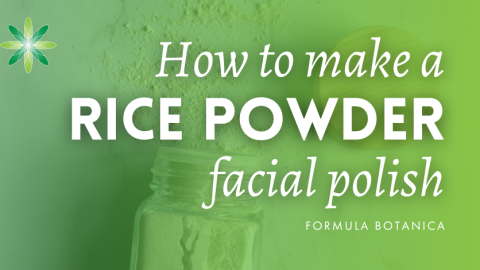In the process of your metamorphosis from DIY Kitchen Formulator to a more scientific (and commercial) cosmetic formulator what are your top priorities of your To-Buy list?
Mixers, homogenizers, scales, pH-meters? May be even filling machines, incubators or viscometer? Well, if that is your list then you’ve neglected the most important and the simplest must-have tool in every lab and especially in a cosmetic lab: your lab notebook.
The Formulator’s Most Important Tool
Without a notebook with a clear and easy to understand structure you can prepare the most fascinating piece of soap or silky emulsion… but how are you going to repeat the recipe and the procedure to achieve exactly the same fascinating product in each repetition?
Laboratory notebooks are an essential part of each lab, (and specifically each formulation lab). In corporate business they are considered as legal documents and have an impact on decisions regarding patents, inventions rights, intellectual properties and other legal issues. As a lotion and potion or a soap crafter or even an entrepreneur in SME (Small and Medium Enterprise) you’re not going to deal with patent lawyers and tens of colleagues in other departments who should have access to your notebook, however the importance of your notebook is no less important. In fact, you could say that
Start working on your notebook and finding a logic and a structure that would work for you and that you can follow through years of your formulating career.
The Notebook
Even in today’s electronic and paperless era, there are many formulators (even companies) who still prefer a paper notebook. I’m one of those old fashioned formulators who prefers real notebooks and not the electronic version of the notebook. It is totally up to you what you choose.
You may want to have an electronic version, a simple word or table document or use commercial software which allows you the access your notebook regardless of your location. If you decide to have an electronic notebook, then think about having a regular (preferably) automatic back-up of your data. You don’t want to lose your data in case of any defects, or theft.
One of the most painful experiences of my life was my hard disk being burnt (with the latest version of my thesis) just one week before my final PhD exam. Let me spare you the pain of going through what I did as I only failed to make a back-up of the very last version before my hard disk said adieu to me (in those times, there was no cloud and no automatic back-up programs and we had to run everything manually).
The Old-Fashioned Version
There are countless versions of commercial lab notebooks or simple notebooks which you can make your “Scientific Diary”. It depends totally up to you and your preferences what to use. I love spiral books because they lie flat. Some people recommend that the lab book should have a sewn binding in order to avoid pages being torn accidentally or intentionally (this might happen in companies and labs with several people having access to the notebook).
Registration and Serial Number
In official lab notebooks each page has a serial number (I personally don’t number my pages) and it could help you to realize if a page gets lost. I have a serial number for each single test or recipe (anything, even if it is dissolving a new gum in water) and reset the number with the new year: 01/15 was the first page in this year’s diary. It is obvious that each test or recipe should have a date.
Since I prepare different products in my lab: soaps, lotions, tonics, bath melts etc., each product has a certain sign and a serial batch number: CS for example is assigned to Cold process Soap (to distinguish it from GS which is glycerine soap or HS which is Hot process Soap), I start the first CS of the year with CS 01/15 and continue through the year. The same for lotions, creams gels and other products. This system works excellent for me and I’m able to track my samples, charges and recipes in a few minutes. Try to think up a system which would work the best for you without confusing you.
Your lab books should have a serial number as well. That would proceed continuously through years, so that if your present lab book is 101, your next one should be 102. This helps you follow and track back your recipes and laboratory trials through years without losing any single one.
How to Write
Spilling oils, liquids or even creams is inevitable, try to write with a pen (and not a pencil) that won’t fade with time (on acid-free paper) and which wouldn’t run if you accidentally spill something on the pages. Try to rewrite the text immediately if you spill something over words you’ve already written down before they fade away.
If you do something wrong, do not erase or apply white ink over it, mistakes are often clues to success. If you don’t like something, only draw a thin red line over it so that you can still read it.
How to Begin
Now that you’ve got your beautiful lab diary and have assigned a number to it, you want to start writing your notes. You may want to leave a few pages at the beginning for a registry or table of content or some general information.
I personally run an electronic table (Excel for example) where I register all my batch numbers, test date and only a short description of the product, this is a sample part of my table of contents:
| Serial# | Code | Batch# | Quantity | Description | Date | Comments |
| 14/15 | CS | 02/15 | 1000 gr | CP Soap | 15.01.15 | Beer soap |
| 15/15 | HT | 01/15 | 100 gr | Hair Tonic | 15.01.15 | Neroli |
With this table I can easily find all samples through the years with the “search” function and then can go to the desired date and find a certain test instead of searching all through the pages of the notebook. You can have more or less data in your table – make sure that you customize it for your purposes.
For example, my tables generally include an additional column (not mentioned here) where I record my client data. Since I prepare samples for different customers and I do want to have all my samples in the same diary, in the last column I add for whom I’ve made the sample or run the test.
What to Record
Temperature and humidity
I suggest you record room temperature and humidity for each page or test. Especially in soap making and making dried powders or bath bombs, humidity plays a big role in appearance, consistency and functionality of the product. If you’re a soap maker, you’ve probably noticed that you sometimes have different results with exactly the same recipe as you make the soap in summer or in winter. Noting the room temperature and the humidity might help you track back all conditions.
Background
It happens more than often to me that I apply a new ingredient, change a certain temperature, stirring speed or replace an ingredient with another and as I look back at my notes I cannot recall why I did that.
Write down your purpose of doing the test or changing parameters, for example: replacing 10% of xanthan gum with microcrystalline cellulose to have a better suspending effect.
As you look back at your notes, you will then know that you wanted a better suspending function and can test or judge the sample after weeks, months, years to check the suspending effect.
Batch size
Batch size might have a big impact on the appearance, texture and stability of your products. Maybe your mixer or homogenizer has the best performance for 2 kg batches and as you prepare exactly the same sample in 2.5 kg you’ll observe a reduced viscosity or a change in the texture. Knowing the batch size might help you find the cause of the difference.
Exact formulation
You should always record your recipe with percentage and gram/kilogram content. It might be necessary to mention the INCI, the trade name, and the batch number of each raw material. You may want to have 5% of glycerine in a 250 gram batch and have accidentally added 13.5 gram instead your planned 12.5 gram. Mentioning both percentage and gram helps you recognize any mistakes in weighing as you look back at the recipe.
Method / Procedure
Here you should mention everything that you’ve done, including the temperature, stirring method and speed, cooling temperature and method, order of mixing ingredients.
Imagine you’re writing a procedure for a newbie who would follow your steps without having any background in chemistry, formulation and mixing. If you have different vessels, beakers, soap molds etc. try to record which one you’ve used.
I usually name all my instruments in the lab. It makes it more fun and less boring to report: 1.5 minutes Markus @ 5000 rpm (beaker was cooled in cold water @10 degrees), and immediately 30 minutes Freddie @ 3000 rpm with propeller @ R.T.
Markus and Freddie are my homogenizer and mixer for example. Here I mention the instrument, the duration and the temperature of stirring. You should try to find your own vocabulary or a way to help you writing down as much information as possible in a fun way and with as less effort as possible.
Observations
All your observations throughout the experiment should be recorded. Look at things as if it’s your first time doing them. “Turbidity by adding the EO-solubilizer blend to the water phase. Transparent overnight” or “very low viscosity at the beginning, the viscosity increased after 4-5 hours” are some examples.
What’s next?
After recording all procedures and observations you may want to note the next steps of that experiment: “trying the recipe but increasing the cetyl alcohol from 0.5 to 0.7%, this may increase the viscosity”.
Writing the next step for each experiment helps you to stick to your plan and to know what is to do. This would be particularly important if you have some assistants or employees who work for you or if you simultaneously work on several projects. You may lose the overview and purpose of your experiments faster than you can imagine.
Blank space
Leave enough blank space or empty pages for your follow-up observations: viscosity and pH changes over time, stability tests and microbiological tests, changes in colour, texture, feel and scent of the product with time.
Last but not least
If you’re unhappy with a result and want to change or improve something, this should be your golden rule:
ONLY CHANGE ONE FACTOR AT A TIME
You can be trapped in spider’s web as you try to change several factors to improve the texture, viscosity, stability or any other factor (don’t ask me how I know this). Changing the concentration, temperature, stirring method or concentration of several ingredients all together and simultaneously is the worst thing you can do. Either it works or it doesn’t work and in both cases you don’t know what to do else.
Now go and start working on your “Formulator’s Diary”. Is there anything I’ve forgotten? Anything you can suggest from your personal experience that can improve or complete this post? Post your comment below and share your experiences with your formulator and crafter friends.
Happy writing!
Leave us a comment

Dr. Elham Eghbali was Formula Botanica’s Cosmetic Chemist between 2014 and 2018. She has over 20 years’ industry experience and is based in Bavaria, Germany. To read more about Formula Botanica’s team, visit our staff page.



























Brilliant. Got a few great pointers to improve my process. Thanks.
Thank you so much for writing this blog post. It’s given me some confidence in knowing that the rudimentary notes I make are on the right track. I will continue to improve my note making. I am particularly interested in the area of batch recording. Thanks so much for taking the time to write this – it’s very useful and interesting.
My notebook also contains one extra section called “Background story”. I am inspired by all sorts of things, an aroma, a drink or food, an experience. I like to write down how the idea for a product came to me. I might just call it “The Muse” section.
Absolutely brilliant, thank you for sharing this. Another example where technology isn’t necessarily the most important thing.
Thank you all for your nice comments. Timi that is a brilliant idea that I missed totally because I’m more technical oriented. I’ve added your suggestion to the end of my post in Linkedin: